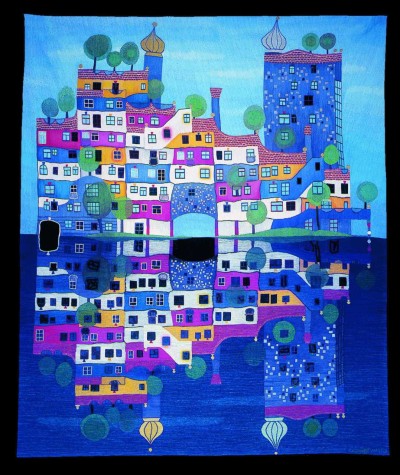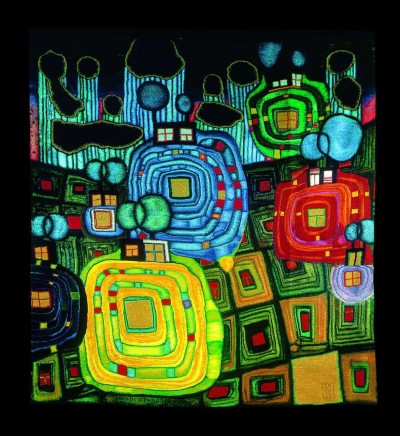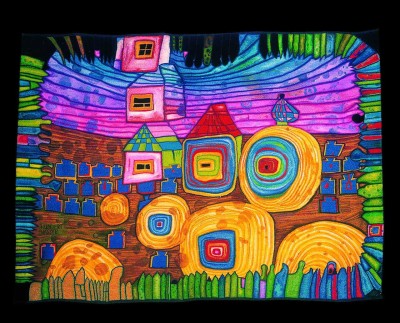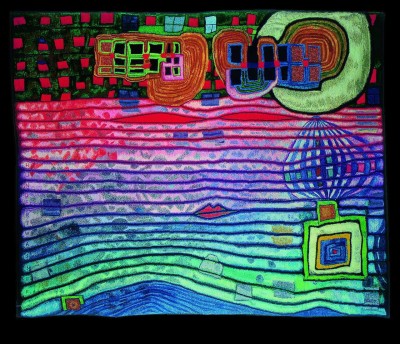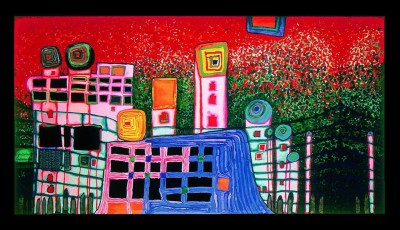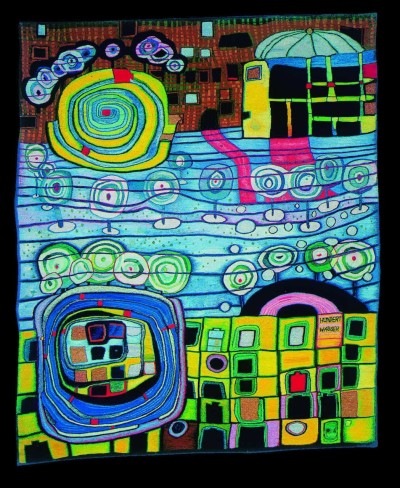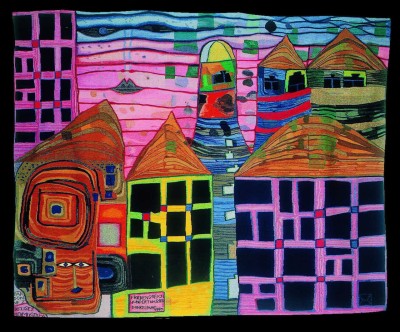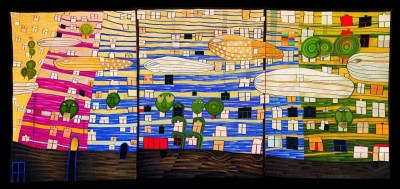HUNDERTWASSER TAPESTRIES
Hundertwasser’s first tapestry 133 Pissing Boy with Sky-Scraper, was woven in 1952 because of a bet in which he claimed that he could weave a tapestry freehand without a cardboard template, which means without a weaving pattern the size of the tapestry. All Hundertwasser tapestries that have been executed afterwards by weavers of Hundertwasser’s choice have been created without cardboard templates.
It was of exceptional significance to Hundertwasser that the waevers applied their personal artistic ideas, thereby creating their own interpretation of the model, while at the same time taking into account the special dynamics of the materials and the weaving technique. It was Hundertwasser’s opinion that the work could only be imbued with life through this procedure, that a genuine artistic work - instead of a soulless copy of the model - could only be created in this way. For this reason, all Hundertwasser tapestries are unique. No editions of tapestries were ever produced.
Hundertwasser only co-operated with very few weavers. Most of the tapestries were woven by Hilde Jelinek-Absalon, with wool, silk and mohair, with 5 to 6 warp threads per centimetre, in a classically traditional technique. The second weaver was Fritz Riedl who maintained an atelier in Mexico, where the Hundertwasser tapestries were woven by skilled Indians. These tapestries from Mexico are somewhat coarser, with 4 warp threads per centimetre, they have the quality of folklore, joyfully coloured and have a vibrant luminosity.
